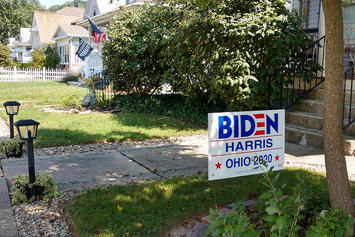
For more than a decade, the idea that Americans are geographically sorting— increasingly choosing to live in neighborhoods populated with people just like themselves—has generated considerable attention in the media and continues to be cited as a very real phenomenon across the nation. In discussing the outcome of the 2020 elections, The Economist stated that Biden surged in some places because of sorting and approvingly held that there is a trend for liberals and conservatives to live among their own kind such that “Americans are still sorting themselves into politically like-minded communities.” You see it further in trend stories like this one from 2016 that say the election came down to “Whole Foods vs. Cracker Barrel.”
The media has seized on the idea that people choose to live in neighborhoods and towns full of others who think just like them. It's a myth.
It makes for clever headlines, but it’s an argument that fails to hold up to empirical reality. Earlier research has already shown that geographic ideological segregation is actually lower than a generation ago, and thanks to data from the newly released National Community and Civic Life Survey at the Survey Center on American Life, the idea that Americans are choosing to live in completely like-minded enclaves does not hold up. In fact, numerous stories circulated this election cycle about neighborhoods with very diverse political leanings. A Wall Street Journal piece on neighbors in Pittsburgh attempted to paint a narrative of civil disagreement this past election, and during the 2016 election even The New Yorker wrote a longform piece on the fact that political life and neighborhood life are often entirely different worlds and should not be considered one and the same.
With that in mind, the first new finding of note takes aim at the idea presented in The Economist that liberals have moved to “diverse, densely populated cities; for conservatives it is places that are mostly white, working-class, and where the neighbors are a .22 round away.” Such an idea is not only incorrect, it perpetuates stereotypes.
The reality present in the national data is that in our nation’s cities urbanites may be politically sorted and thus divided by partisanship (68 percent Democrat vs. 28 percent Republican), but when it comes to ideology just 24 percent of urbanites identify as extremely liberal or liberal and 17 percent as extremely conservative or conservative. Although there are more liberals in cities compared to conservatives, neither ideological position is anywhere near a majority; centrists and moderates are the dominant position. Moreover, research has shown that social and friendship networks of Americans are socially segregated along several dimensions including politics. Partisans and ideologues are roughly equally likely to have social networks that reflect their own political predispositions—about three quarters of each group’s social network are liked minded politically—but moderates and centrists are diverse and split with a fairly equal mix of those on both the left and the right.
Moreover, in the suburbs, there is more political diversity than in cities, as 56 percent of suburbanites identify as Democrats and 42 percent as Republicans. Ideologically, identical numbers (21 percent) of those in suburbia identify as either liberal or conservative. Again, the dominant group (56 percent) are those who are moderate and middle of the road with slight ideologues.
In rural areas, Democrats make up 43 percent of the population and Republicans 51 percent. (You can see how this plays out in states like Montana, which has a Democratic governor, a divided congressional delegation, and voted for President Trump.) There are fewer liberals (11 percent) compared to conservatives (29 percent), but again this is anything but monolithically conservative with the overwhelming balance (56 percent) being centrist. None of these numbers get into landslide territory—60 percent or more of one ideology—for the left or the right and it is hard to argue that there is some geographic divide based on ideology.
Read the rest at The Dispatch.
Samuel J. Abrams is professor of politics at Sarah Lawrence College and a visiting scholar at the American Enterprise Institute.
Photo credit: Dan Keck via Flickr under Public Domain.












